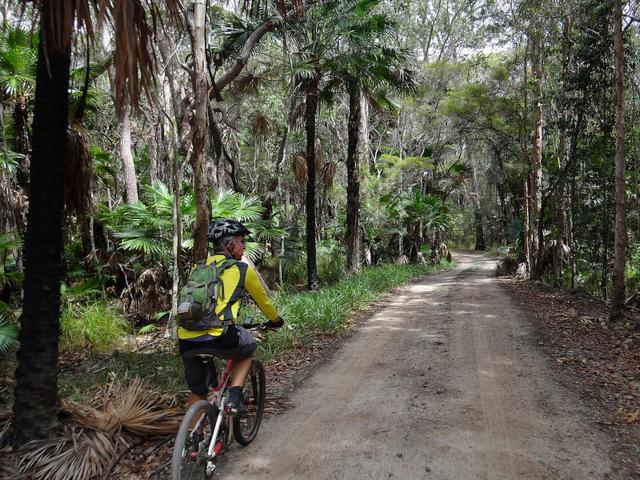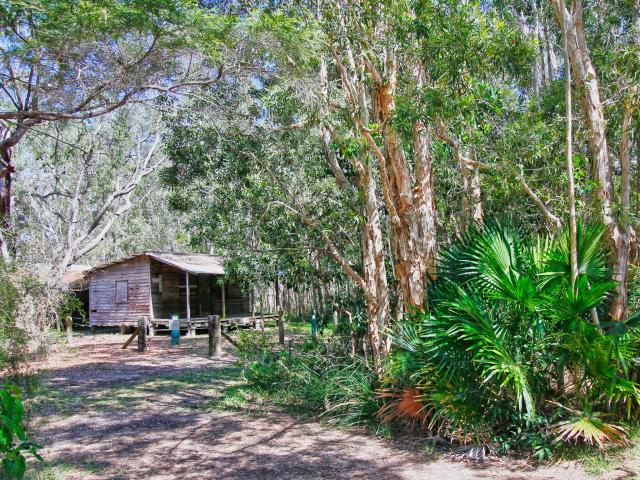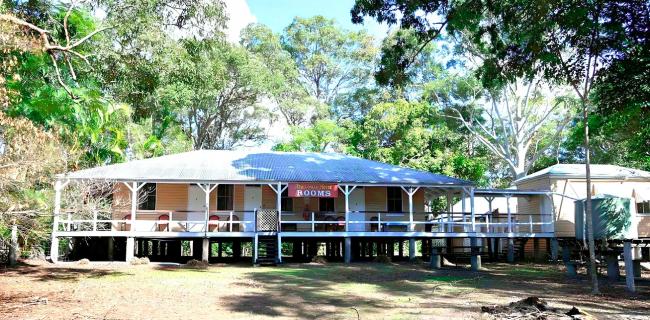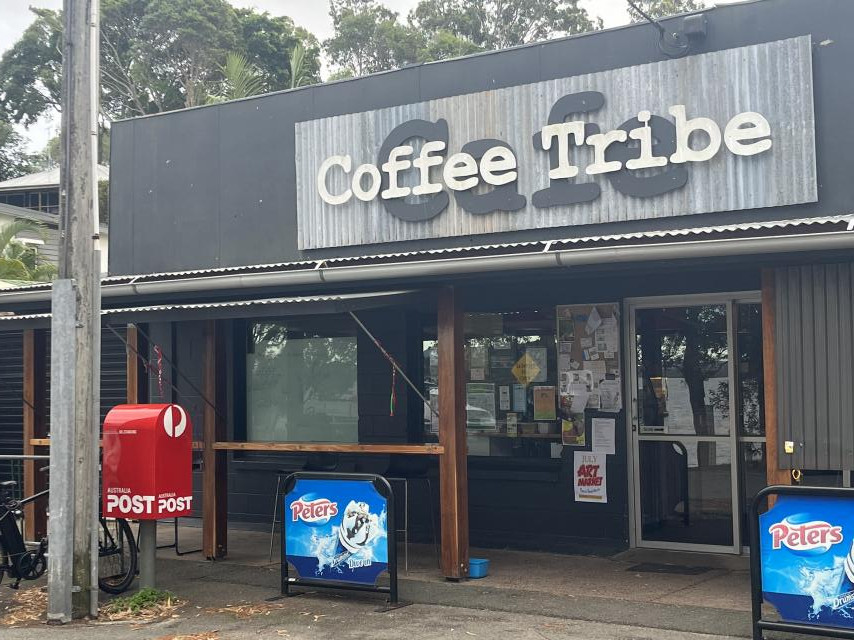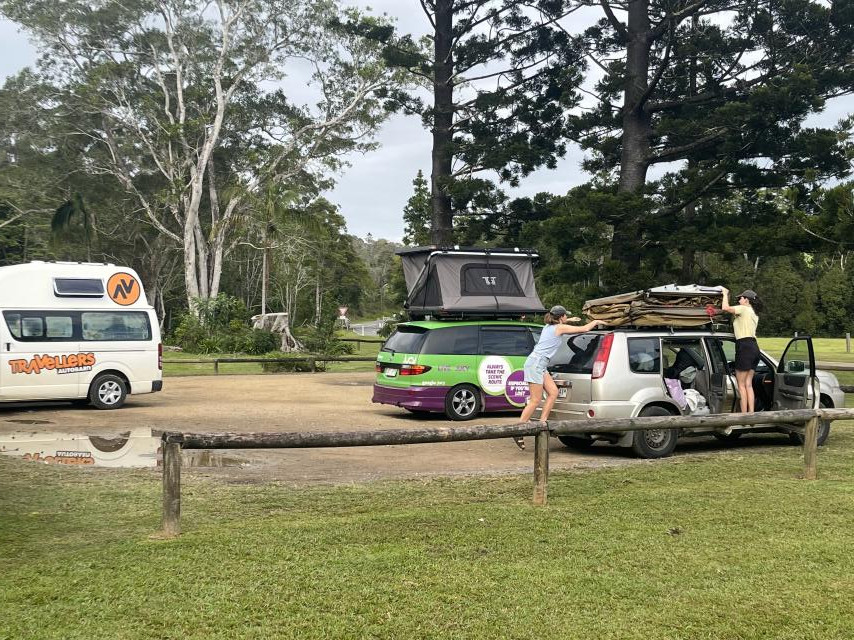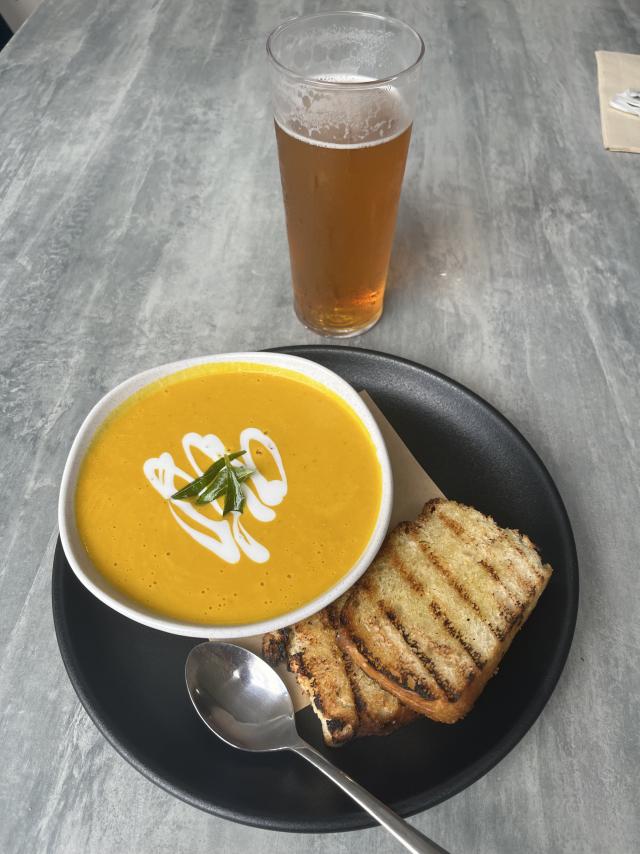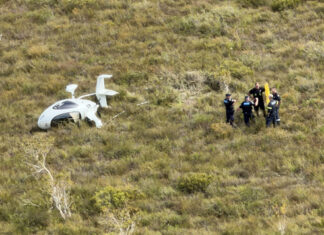I had a plan but it wasn’t great.
I would ride the trusty e-bike out to Boreen Point in the late afternoon, refresh myself with a couple of beers and a feed on the terrace of The Apollonian, then check into their rooms across the paddock and get a good night’s sleep before skirting the boundary of the Cooloola Recreation Area early the next morning, crossing Kin Kin Creek and riding up to Harry’s Hut for a walk around before coming back down Cooloola Way and through Kin Kin.
Where did I go wrong? Let me count the ways.
1. It was raining at dawn.
2. The track to the wooden bridge over Kin Kin Creek goes into the recreation area where bikes are not allowed.
3. The wooden bridge over Kin Kin Creek no longer exists. (I know, I checked it out the next day.)
Over a bacon and egg muffin and a good cup of coffee at the excellent Coffee Tribe in Boreen Point, I made a new plan. Up to Harry’s Hut via Kin Kin and back the same way. A long ride, but a good one. And it had stopped raining. Almost.
A light drizzle started to get heavier as I turned off Lake Flat Road into Kinmond Creek Road and I was forced to dig the spray jacket out of my backpack. It was an annoyance but there were breaks in the cloud cover and even a shard of sunlight as I reached Dr Page’s Road, and it was enjoyable riding, with barely a car on the road even as the morning wore on.
I climbed the steep hill to the Gympie-Kin Kin Road and crossed Kin Kin Creek before pulling up at the old Whapunga School Park – the long-gone single-room schoolhouse where former Noosa mayor Noel Playford was educated.
I’d pulled into the park for shelter as the rain suddenly got heavier, but found myself helping two French girls from Normandy retract the sleeping annexe of their camper before their bedding got soaked. They didn’t quite know how they’d stumbled into Whapunga the previous evening, but they weren’t the only ones.
About half a dozen vans, all of them apparently occupied by Europeans who didn’t know each other, filled the car park and the not-unpleasant aroma of fried eggs wafted about.
Kids having fun, and as the rain eased off and I cycled away, no doubt having a few laughs about the silly old geezer on the e-bike.
By the time I reached Cooloola Way and the dirt road, I was in full sunlight, and even after the track got a little rough in parts after the turnoff for Harry’s Hut, it had turned into a beautiful morning’s cycle through some of the lovelier parts of our hinterland.
The fact that Harry’s Hut still exists is a minor miracle and a testament to the tenacity of all the river people who saw the practical and historical value of a shack at the edge of the wilderness, but it wasn’t always Harry’s Hut.
Once it was Alan and Norman’s.
It was built in 1957 by timbermen Alan Buchanan and Norman Thrush for Tewantin Sawmills to accommodate its timber workers who needed some home comforts to remain so deep in the bush for weeks at a time. The workers had semi-permanent campsites where they were logging on the eastern side of the Noosa River, but it was felt that a more permanent structure on the westside where they were trucked to the mill, would be an advantage, especially during the heavy rainfall of summer. Alan Buchanan also built the winch which was used to drag the timber across the river where it was stockpiled behind the hut.
Initially, Buchanan and Thrush built a “frogmouth galley” on the north side of the one-room cabin to catch rainwater since the river water was considered too brackish to drink. This was later replaced by a rainwater tank.
Harry Spring was a pharmacist who had shops in Cooroy and Pomona, where he is still remembered as a good and generous citizen who helped needy school children with their education by offering bursaries.
But Harry also liked to escape into the bush to fish for bass in the northern reaches of the Noosa River. Often, he and his fishing mates would pitch a tent adjacent to the hut. In the 1960s, after logging had finished, he made Sam McKinnon, the owner of Tewantin Sawmills, an offer he couldn’t refuse and purchased the hut and arranged a lease from the forestry department. Sam may have had the road from Tewantin to Boreen Point named after him, but Harry’s name was on the hut.
Harry and his mates extended the simple one-room hut by connecting the galley to it using an iron roof taken from an old slaughterhouse, and then flooring the connecting area, building their empty beer bottles into the foundation. Harry also added a veranda of local timber, and used a simple kerosene lantern to light the hut until later when he added a small generator.
When Harry Spring died at 92 in 1999, the lease on Harry’s Hut reverted to the National Parks administration where it remains today. It’s still a favourite hangout for keen amateur fishermen and more recently a stopover for river tours. Until I rode up there the other week, I hadn’t seen the hut in many years but it had changed very little, still a classic example of a timber getter’s hut, albeit tricked up by fisho’s.
I’d planned to hike along the river bank to check out a couple of the Cooloola Great Walk campsites, but a long ride dodging showers and potholes had taken a toll on the old fella, and after an inspection of the hut and feasting in a couple of bananas and a drink from my water bottle, I decided to start the 30 kilometres back to Boreen. But at Lake Flat Road I realised I was dangerously low on charge, so detoured to The Habitat to charge the bike and charge the spirits at the tavern with a cold beer and a bowl of delicious soup.
Life was good, and by the time I got back to The Apollonian the trivia night was about to start!
Next week: Mill Point and Kinaba.

